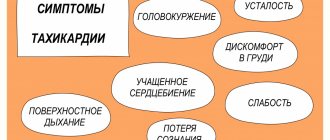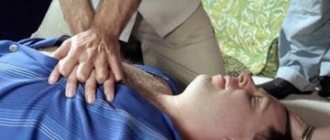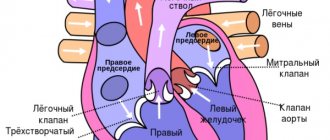Heart failure in dogs is a disease with a complex of characteristic symptoms that are associated with inadequate perfusion of organs and tissues at rest or during exercise and often with fluid retention in the body.
Simply put, heart failure is a malfunction of the heart, as a result of which it cannot pump the necessary amount of blood for the normal functioning of the body.
Not any heart disease leads to heart failure, but only one that results in a decrease in cardiac blood output and an enlargement of the heart chamber (right or left atrium).
Important! Heart failure cannot be cured. Sick animals need to be periodically observed by a veterinarian throughout their lives in order to promptly stop acute processes.
Anatomy of the heart
To better understand the mechanism of the disease, you need to have minimal knowledge about the structure of the heart.
In short, a dog's heart consists of four chambers:
- right atrium;
- right ventricle;
- left atrium;
- left ventricle
The aorta emerges from the left ventricle, and the pulmonary artery emerges from the right ventricle. The pulmonary veins flow into the left atrium (there are three in dogs, and four in humans), and the superior and inferior vena cava flow into the right atrium.
The valve apparatus of the heart plays a critical role. The role of the valves is to allow blood to flow in only one direction.
On both the left and right, the atrium and ventricle are separated by a bicuspid valve or mitral valve (in humans, there is a tricuspid valve between the right atrium and ventricle).
At the entrance to the aorta and pulmonary artery there are semilunar valves that separate them from the ventricles.
Like people, dogs have 2 circles of blood circulation - large and small.
The great circle begins in the right ventricle. From it, oxygenated blood is pushed into the aorta. Through the vessels branching from the aorta, oxygen-rich blood goes to the head, limbs and abdominal organs, where gas exchange occurs.
As a result of gas exchange, blood, already poor in oxygen, but rich in carbon dioxide, enters the right atrium through the vena cava. From the atrium, blood enters the right ventricle and the pulmonary circulation begins.
Blood enriched with carbon dioxide from the right ventricle is pushed into the pulmonary artery and “goes” to the lungs, where gas exchange occurs and the blood is saturated with oxygen. Already oxygen-rich blood flows through the pulmonary veins into the left atrium, from there into the left ventricle and a large circle begins again.
Now it will be easier to understand the causes of heart failure.
Causes of heart failure
Heart failure occurs as a result of:
Congenital heart defects
Defects in the anatomical structure of the heart. Such as: defects of the interventricular or intercardiac septum; aortic or pulmonary stenosis (narrowing); tetralogy of Fallot (the aorta emerges from both ventricles at once) and many other pathologies.
Congenital cardiomyopathies
As a rule, these are dysfunctions of cardiac contractility.
Characteristic for dogs:
- Arrhythmogenic right ventricular cardiomyopathy. In simple terms, the myocardium (the heart muscle itself) of the right ventricle is destroyed and replaced by fibrous and fatty tissue. Because of this, the ventricle cannot fully contract and, therefore, “push” blood out of itself.
- Dilated cardiomyopathy is characterized by dilatation of the chambers of the heart. As a result, the ability of the heart to contract is impaired, and the volume of blood that the myocardium “throws out” into the aorta and cardiac artery decreases (depending on which chamber has expanded). This is called decreased cardiac output.
Acquired diseases
Acquired heart diseases:
- bacterial endocarditis - inflammation of the inner lining of the heart caused by pathogenic microbes (streptococci, staphylococci, bortenella). Dogs become infected with the latter bacterium from cats during a fight. Bartonellosis is called cat scratch disease. As a rule, the dog first gets sick with bacterial pneumonia, pyometra, and other bacterial infections, and endocarditis can develop as a complication. It must be said that this does not happen so often, but this diagnosis cannot be excluded;
- neoplasms . Usually this is hemangiosarcoma - located in the right atrium. And chemodectoma is localized at the base of the aorta;
- secondary cardiomyopathies (hyperthyroidism);
- Cardiac tamponade is the accumulation of fluid in the pericardium (heart sac). In this case, heart failure develops if the fluid accumulated in the heart sac puts pressure on the heart itself, thereby complicating contractile processes;
- myocarditis is an inflammatory disease of the heart, as a result of which the walls of the myocardium thicken (due to cellular infiltration), contractility and conduction functions are impaired, etc. Myocarditis can develop as a result of almost any disease, both allergic, toxic and infectious, and even after mechanical damage;
- poisoning , for example, with thallium or phosphoric acid ester, etc.
Parasitic diseases
We are talking about dirofilariasis (heartworms). These helminths are carried by mosquitoes.
Heart valve disorder
This pathology may be congenital, but it manifests itself only with age.
- endocardiosis of bicuspid valves (located between the atrium and ventricle). With this pathology, the walls of the valve thicken and become deformed, as a result they no longer close tightly. The blood that goes from the atrium to the ventricle partially returns back to the atrium;
- insufficiency of the aortic and pulmonary valves. In this case, the blood cannot be completely released into the vessel from the ventricle.
Treatment of the disease
If a dog is diagnosed with heart failure, veterinarians first advise limiting physical activity. Walks are reduced to half an hour with constant monitoring of the animal’s condition.
In your pet's diet, you should reduce the intake of liquid and salt.
A whole group of medications is prescribed. Among them are diuretics to reduce edema, drugs with potassium, vitamins, cardiac glycosides. One of the most effective drugs for the treatment of heart failure is Vetmedin for dogs.
What is Vetmedin
Vetmedin photo
This is a cardiotropic drug, whose action is based on the expansion of blood vessels that supply the heart and an increase in the frequency and strength of contractions of the heart muscle. The active component of the drug is Pimobendan, which acts on the amplitude of heart contractions and the expansion of the lumen of blood vessels.
The drug is quickly absorbed into the blood and excreted naturally in the urine.
Vetmedin's release forms are gelatin capsules and tablets with dosages of 1.25 mg, 2.5 mg, 5 mg and 10 mg. The medicine is packaged in bottles with a screw cap. A bottle can contain 50 tablets or 100 capsules.
For heart failure, Vetmedin is prescribed for continuous use. The veterinarian calculates the dosage individually for each animal, taking into account the presence of other chronic diseases, the animal’s weight, breed, and age.
Important! The drug is given orally one hour before feeding the pet. The daily dose is divided into two doses, with an interval of 12 hours between them. Strict adherence to the instructions and schedule for taking the drug is very important. Your friend's life depends on it.
For a small breed dog weighing less than 5 kg, Vetmedin 1.25 mg is suitable.
For body weights from 5 to 10 kg, the daily dose is one Vetmedin 2.5 mg tablet.
If the animal weighs from 10 to 20 kg per day, one Vetmedin 5 mg tablet or two 2.5 mg tablets per day is used.
A large breed dog will need from 2 to 6 5 mg tablets per day.
Side effects and contraindications to taking the drug
Contraindications to taking Vetmedin are diabetes mellitus, aortic stenosis, severe liver damage, and primary heart defects in animals.
The drug should not be given to puppies under six months of age. During pregnancy and lactation it should be used only if there is a risk of losing the animal.
Among the side effects:
- stool disorder;
- vomit;
- decreased blood pressure;
- apathy, refusal to feed;
- tachycardia.
If such symptoms occur, urgent consultation with your doctor is necessary to reduce the dose of the drug.
How to store the drug
Vetmedin is stored at a temperature of 8 to 25 degrees in a place protected from direct sunlight. Do not store near food, keep out of reach of children.
If stored correctly, the drug is suitable for use for three years from the production date on the package.
The price of the medicine varies depending on the dosage and the number of pieces in the package. You can get up-to-date information about the cost or place an order on the Inter-vet veterinary pharmacy website. Follow the link https://inter-vet.ru/products/vetmedin
Mechanism of heart failure
Heart failure develops when the heart cannot pump blood in the required volume due to the pathologies described above.
The blood cannot fully exit into the vessel (aorta or pulmonary artery, depending on which side is affected) and remains in the heart chamber, therefore the chambers expand and the pressure increases. And then the vicious circle begins.
In simple terms, the receptors of the outgoing vessels “detect” that the blood has entered in less quantity than it should, and send a signal to the brain. But there is no signal that the heart is “overfilled.”
The body thinks that since there is less blood in the vessel than needed, then blood loss has occurred - bleeding. And it triggers compensatory mechanisms to make up for the loss:
- increases heart rate;
- retains fluid in the body;
- the lumens of blood vessels narrow.
But these mechanisms, on the contrary, make the work of the heart even more difficult and cardiac output becomes even less. Plus, tachycardia develops and the heart rhythm is disturbed.
In this case, gas exchange is disrupted, tissues do not receive enough oxygen and the entire body suffers.
Congestion also develops. Depending on the type of pathology, either in the right or left half of the heart.
Left-sided congestive heart failure, as a result of increased pulmonary venous pressure, ultimately leads to pulmonary edema.
Right-sided congestive heart failure cannot lead to pulmonary edema. With it, the jugular vein dilates, the pressure in the vena cava increases, as a result of subsequent processes, hepatomegaly develops (stagnation of blood in the liver) and fluid from the vessels leaks into the abdominal cavity - ascites.
Treatment of heart failure in dogs
In order to prolong the life of your pet and make it as prosperous and complete as possible, consultation and constant monitoring with a doctor is necessary. Only with proper organization of your pet’s life activity will he, with heart failure, be able to delight you with his presence for a long time.
One thing you need to understand is that physical activity becomes minimal. After all, with heart failure, blood circulation suffers greatly. This means that most of your pet’s organs do not receive the required amount of oxygen. Which leads to oxygen starvation. So the dog should not run during a walk. Its owner should not forget about this.
But you can just take a walk with her, slowly. It’s better if your pet just lies down, lazes around, and takes a break from business, so to speak. And the owner and his family members, knowing the health characteristics of the pet, can devote a couple of hours of free time to it. Such passive rest is useful for your four-legged friend.
To prevent your dog from having to exercise, place his food and drink dishes in the place where he spends more time and likes to lie down. This also reduces physical activity and saves the pet’s strength. It is better to carry the dog in your arms up and down the stairs. Such ascents and descents are strictly prohibited for her.
It is necessary to radically reduce salt intake. Fluid is retained in the body and helps slow blood circulation, as well as the appearance of edema. If you buy food for an animal, then it is necessary to purchase food where salt is limited in composition or absent.
You need to know the dog's pulse. At home, it is better to count the pulse of a sleeping animal. You just need to place your hand on the dog's chest and count the number of heartbeats for one minute. You can also count your breathing. Such data will be useful when visiting a specialist.
A meeting with a veterinarian is held once a quarter. This is provided that the disease passes quietly, without complications. If the animal’s health condition worsens, a meeting with a specialist takes place immediately.
Drug treatment for heart problems in dogs
It is well known that you need to be very careful about the health of your pet. In heart failure, large amounts of water accumulate around the lungs and in the abdomen. The accumulation of fluid already makes the dog owner worry and take action. But if you see that the dog has:
- breathing is frequent;
- the animal constantly coughs;
- gets tired quickly, exhausted;
- she cannot handle ordinary physical activity;
- shortness of breath appeared;
- rapid pulse;
- the appetite has become poor or the animal refuses to eat altogether;
- The animal is losing weight.
For this disease, doctors usually prescribe diuretics. They are necessary to help the body get rid of excess fluid that has accumulated in large quantities in the body. Fluid may accumulate around the lungs. Which leads to swelling of this organ. If fluid constricts the chest, then this is the beginning of pleurisy. Ascites occurs when fluid fills the abdominal cavity.
In order for blood circulation to be better and the heart to work easier, it is necessary to remove excess fluid from the body. Furosemide is not only possible, but also should be used to remove excess fluid. This medication is usually used twice throughout the day. The animal should receive two milligrams of the drug per kilogram of weight per day. It must be remembered that when treating with this medicine, it is necessary to include bananas in the diet of a sick dog, since they help restore potassium in the body. After all, furosemide removes it. To restore the required amount of potassium, the dog needs to be given only one of these potassium-sparing fruits per day.
- The use of spironolactone begins in cases where furosemide no longer provides the desired effect. The animal receives it once a day. It is better to give it at the moment when the pet is eating.
- With the help of an ACE inhibitor, the load on the heart is reduced. With the help of this medicine, blood vessels open up and blood circulates much faster.
- You can continue treatment with enalapril. It is given to the animal once a day. If necessary, use twice throughout the day.
- The use of an inotrope will help regulate the pulse and strengthen the work of the heart muscle.
Degrees of heart failure
Heart failure can be acute or chronic. As a rule, the acute stage develops as a result of shock, injury, poisoning or poisoning. If death does not occur, then the acute stage becomes chronic.
Heart failure is assessed by degrees and indices.
Degrees
- 1st degree. With it, signs of the disease are observed only after significant physical exertion.
- 2nd degree. Symptoms appear after moderate physical activity, as well as if the dog is highly overexcited (emotional stress).
- 3rd degree. Signs are noticeable after minor physical activity, possibly even at night.
- 4th degree. Symptoms appear constantly, regardless of the load.
Indexes
- A. Changes in the heart do not have a significant effect on blood circulation.
- B. Changes in the heart lead to a mild change in blood circulation.
- C. Changes in the heart significantly disrupt the movement of blood through the vessels. There are congestion in the lungs, the chambers of the heart are dilated.
- D. Abnormalities in the heart are pronounced and lead to very serious disturbances in blood circulation.
How to help your dog with congestive heart failure
The best thing you can do for your dog with congestive heart failure is to follow veterinary recommendations and communicate with all veterinarians who are treating your dog.
Give all medications as directed regularly and do not make adjustments without veterinarian advice. Follow the diet according to your veterinarian's instructions and avoid salty treats as they may make your dog's condition worse.
Monitor your dog for signs at home and notify your veterinarian immediately of changes.
Although your dog may eventually die from congestive heart failure despite your best efforts, it can provide peace of mind knowing that you provided a good quality of life until the very end.
Symptoms
Symptoms depend on the disease causing heart failure. General signs:
- fast fatiguability;
- exercise intolerance;
- cough;
- dyspnea;
- sometimes fainting;
- the appearance of edema;
- pathological heart murmurs;
- increased heart rate (HR);
- heart rhythm disturbances;
- there may be pain on palpation in the heart area;
- disturbances in the functioning of the kidneys and liver appear;
- the worst thing that can happen is sudden death, without any previous symptoms.
The following symptoms are of great diagnostic importance:
- if there are signs of pulmonary edema, this indicates pathology on the left side of the heart;
- if we observe ascites, or stagnation of blood in the liver, we conclude that there is a disorder in the right half of the heart.
Bacterial endocarditis is characterized by:
- fever;
- lameness (non-specific symptom but worth paying attention to).
Externally appearing symptoms are not enough to make a diagnosis; it is necessary to conduct special studies to obtain data of greater diagnostic value.
Risk group
At risk are dog breeds that have a genetic predisposition to heart disease:
- dachshunds;
- brachycephals;
- poodles;
- Yorkshire Terriers;
- Dobermans;
- boxers (especially Arrhythmogenic cardiomyopathy);
- Great Danes and other large dogs (decompensated cardiomyopathy);
- Shepherd dogs are predisposed to hemangiosarcoma.
Also at risk are older dogs and those who have suffered an infectious disease or injury.
Bitches with pyometra (purulent inflammation of the uterus) often develop bacterial endocarditis.
Prevention of the disease
There are some recommendations that will help avoid heart problems (with the exception of congenital defects), and they are as follows:
- Every dog should be periodically examined at a veterinary clinic. This will help avoid the risk of developing all diseases, including cardiovascular diseases. First of all, this instruction applies to large and small breeds of dogs, since they are at risk;
- The functioning of the cardiovascular system should be checked especially carefully if the dog is 7-8 years old;
- Dogs need optimal exercise. You cannot overtire her with exhausting activity and jogging, but at the same time, short movement is simply vital for her. The owner must first draw up a walking plan that will be comfortable for the animal;
- In the summer, it is recommended to take active walks in the early morning and late evening so that the dog does not become overtired from the heat. If you have a long trip by car, you need to make sure you have water in advance.
First aid
If your pet has already been diagnosed with heart failure, then your veterinarian should advise you and tell you how you can help your dog during an exacerbation.
Since there are so many predisposing pathologies, there is no single mechanism of action, each case is unique.
If your pet does not have a diagnosis, but you suspect heart problems, then you need to see a veterinarian as soon as possible. The work of the heart is a complex system, and without diagnosis and proper knowledge, you can harm your dog on your own.
What is the cause of the pathology?
Heart failure in dogs is a condition of the heart in which it cannot fully pump blood, resulting in decreased blood supply to all organs. Due to blood stagnation, the body experiences oxygen starvation and a deficiency of nutrients occurs in the tissues. In this case, the dog’s brain, bronchopulmonary system and the heart itself suffer to a greater extent.
Signs of heart failure in dogs can appear at different ages. In puppies, the first symptoms of pathology are observed if they have congenital anomalies of heart development:
- cardiomyopathy - thickening of the heart walls that interferes with normal blood circulation;
- abnormal development of heart valves;
- other congenital heart diseases.
Heart problems in young animals are most often associated with very large or toy breeds of dogs, as they have a genetic predisposition to developing heart failure.
A viral or bacterial infection can cause pericarditis or myocarditis in a dog at any age. Dogs older than 6-7 years old develop heart failure as a result of high blood pressure, improper physical activity, and infection with certain types of helminths.
Depending on the causes and course of the disease, acute and chronic heart failure (CHF) are distinguished . If some disease triggered the development of heart problems, then this is acute heart failure in a dog. Although this is a dangerous condition, if diagnosed correctly and treatment started on time, this pathology can be treated.
The chronic form has periods of exacerbation, which after therapy are replaced by remission.
Diagnostics
A complete diagnosis is only possible in a clinical setting.
First, the veterinarian will ask you several questions, so be prepared to answer: what diseases did the pet suffer from, when did the first complaints begin, is there a cough at night, how quickly does the dog get tired?
Then the doctor conducts an examination, auscultation (using a stethoscope, listening to heart sounds, etc.).
Further special studies are required at the discretion of the veterinarian: x-ray, echocardiography, electrocardiogram.
And laboratory diagnostics: general and biochemical blood tests.
In some cases, it is necessary to do an ultrasound of the heart.
But since not all veterinary clinics are equipped with the necessary tools, diagnosis can be difficult.
Treatment
The drugs themselves are prescribed exclusively by a veterinarian after diagnosis. Most likely, you will have to continue treatment at home, but with specific prescriptions from the doctor.
As a rule, at the first and second stages the following drugs are prescribed:
- angiotensin converting enzyme inhibitors (ACEIs) - to relieve vasospasm and prevent fluid retention in the body (to prevent edema);
- diuretics.
And already at the third and fourth stages there are much more medications:
- ACEI;
- diuretics;
- calcium channel sensitizers (for example, vetmedin) the mechanism of action is that these drugs increase the force of heart contractions without increasing the heart rate;
- cardiac glycosides;
- PDE inhibitors;
- metabolic drugs (mineral supplements).
It is very important that the medications are prescribed and the dosage calculated by a specialist.
Most of these drugs have strict contraindications and serious side effects in case of overdose.
Proper care at home
The task of experienced veterinarians is to prevent irreversible consequences in the dog’s health, normalize its condition and eliminate the clinical manifestations of heart failure. However, in addition to drug treatment, your pet requires proper care at home.
If your pet is diagnosed with acute or chronic heart failure, you will need to follow a set of measures:
- dose physical activity,
- provide emotional peace
- eliminate stressful situations,
- change your pet's diet by adding foods high in thiamine, magnesium, selenium and vitamin E.
Remember: the sooner you seek professional veterinary help, the greater the chance of your pet returning to a healthy life!
Dog care
It is very important not to overload a sick dog, but at the same time prevent excess weight gain.
Provide your pet with a place in the house where nothing will disturb him; such dogs need peace.
Daily walks at a relaxed pace. There is no need to force the dog to run.
And of course watch your diet. The diet should be complete and balanced.
Popular questions
What food to choose for a dog with heart failure?
There are special lines of food for animals with heart pathologies. In some cases, mineral and vitamin supplements, L-carnitine, etc. are necessary.
It is also very important that the dog eats his daily allowance and does not overeat. To do this, you can feed wet food - they have lower calorie content, but are more palatable.
How long do dogs with heart failure live?
It all depends on the severity of the pathology. With timely diagnosis, therapy and periodic examinations, the dog may well live until its old age.
How do dogs die from heart failure?
Dogs often die suddenly and quickly from heart failure.
Can heart failure in a dog be cured?
No. This disease cannot be treated; it is only possible to stop the development and stop the acute stages.
Signs of the disease
Since the disease is inherent in animals of different ages, all dog owners need to know how heart failure manifests itself in order to seek qualified veterinary help in time.
In puppies, the disease has the following symptoms:
- lethargy;
- loss of appetite, weight loss;
- hoarse breathing, shortness of breath after active movement and at rest;
- loss of consciousness;
- cyanosis of the mucous membranes.
Heart failure in adult dogs has the following symptoms:
- fatigue, depression;
- dry and hoarse cough;
- thirst;
- weight gain;
- fainting;
- difficulty breathing even at rest.
If your pet is already in old age, then with heart failure he will have the following signs that indicate a problem:
- weakened state of the animal;
- swaying and widely spaced front legs when walking and while sitting;
- lack of appetite;
- breathing with an open mouth;
- deep cough;
- enlargement of the abdomen due to the accumulation of fluid in it.
If at least a few of these symptoms appear, you should urgently contact a veterinary clinic, as timely treatment of heart failure will help prolong the life of your pet.
Briefly about the main thing
- Heart failure is a disease in which the heart cannot pump enough blood, the chambers of the heart dilate, and cardiac output decreases.
- Heart failure cannot be cured; it is a lifelong diagnosis that must be monitored throughout your life.
- Heart failure develops as a result of other cardiac pathologies, both congenital and acquired. Not every heart disease entails failure, but only those that impair hemostasis.
- The disease is classified into four degrees and four indices, depending on the severity of symptoms.
- Dog breeds at risk with a predisposition to heart pathologies include: Dachshunds, poodles, Yorkshire terriers, brachycephalics, Dobermans, boxers, Great Danes and some other breeds.
- Diagnosis of the disease is possible only in a clinical setting, after examination by a specialist and special research methods (X-ray, echocardiography, ECG, ultrasound of the heart and laboratory tests).
Disease Prevention
If you have taken the liberty of getting a dog, then try not to forget about it. And always remember that a dog requires constant attention. Values his owner. That the animal is always grateful to him simply for having an owner. This pet needs your constant love and care. To avoid such diseases it is necessary:
- explore your dog's physical abilities. Select and regulate her physical activity. To do this correctly, you must take into account the breed of your dog. After all, the physical capabilities of each animal are different.
- It is vital for a dog to exercise a lot. Constant movement is normal for her.
- You should not keep your pet on a leash all the time. And it’s also not worth keeping it within four walls in an apartment. Garden, field, square, forest - animals need space.
- You need to take your dog for a walk several times a day. Walks should be enjoyable, not tiring, for your four-legged friend.
- You can’t limit yourself to just one long walk a day.
- When talking about your pet’s nutrition, you need to take into account its age, breed, and personality traits.
- Make sure your diet is balanced. Your dog's diet must contain proteins, fats, and carbohydrates. But at the same time, there should always be a place for minerals and vitamins in an animal’s diet.
- When preparing the next portion of food each time, you must constantly keep track of the amount of salt that gets into your pet’s food. And also monitor how much fat your dog gets with each meal.
Starting from the age of six, all dogs become candidates for the so-called “risk group”. It is from this age that there is an increase in heart failure among dogs. Owners of four-legged friends need to know this:
- Dwarf dogs must be regularly examined by a specialist. Since they are very prone to heart diseases, especially heart failure.
- If your dog's nervous system is easily excitable, then he needs to visit the veterinarian quite often to know about the condition of his heart.
- Large dogs are also predisposed to heart failure. Owners of such dogs should remember this well.
- There are several dog breeds that are predisposed to cardiovascular disease.
The sooner heart failure is detected in an animal, the more effective the treatment becomes. After all, it is well known that a disease at an earlier stage is much easier to treat.
Currently reading:
- Detection of endocardiosis and its treatment in dogs
- Ways to manage parvovirus infection in dogs
- Prognosis and treatment of kidney failure in dogs
- Thyroid dysfunction in dogs (hypothyroidism)









